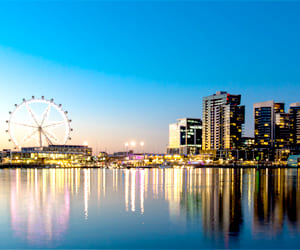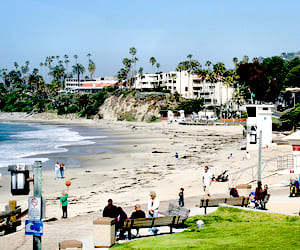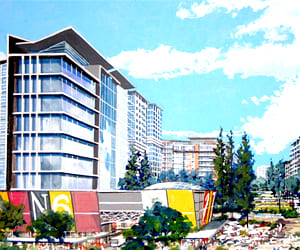Transforming a Two-Storey Home: Repainting Anodised Brown Aluminium Windows to Pearl White
- Aluminium Painting, Aluminium window painting service, Elite Aluminium Repainting, Gold Coast Painter, Gold Coast professional painter, Interior House Painters Gold Coast, Painters Gold Coast, Painters in Gold Coast QLD, Painters near me
- 2pac windows painting, Alluminium window painting services, aluminium colour change, aluminium security screen painting, aluminium spray painting
A full, detailed look at the real process behind updating old aluminium frames on the Gold Coast
Most homes on the Gold Coast built through the 80s, 90s and early 2000s share one common feature: anodised brown aluminium windows and sliding doors. They were durable, affordable, and popular for decades, but today they stand out as one of the biggest things that dates a house. When the exterior of a home gets repainted, the roof is restored, the garden is updated, or the interior is modernised, those old brown frames nearly always become the last remaining reminder of the home’s original era.
This article takes you through the full process of repainting those anodised brown window frames into a crisp Pearl White on a two-storey Gold Coast home. This job represents the kind of work we do every week, and it reflects the real steps, products and processes behind each transformation. Window painting is not a quick patch job or a spray-and-go service. It requires preparation, masking, skill, the right primers, the right pressures, and consistent technique. When it’s done correctly, the results are indistinguishable from new factory-finished frames.
This is the complete breakdown of how we approached this two-storey repaint from start to finish.
—
The Reason People Choose Pearl White
Pearl White is one of the most popular colours for repainted aluminium windows. There are a few reasons homeowners choose it:
1. It blends with most interiors and window coverings.
White shutters, white curtains, light timber tones and neutral walls all suit Pearl White, making it a seamless choice.
2. It brightens interiors.
Brown frames tend to cast a shadow or dark outline around the glass, especially inside. White frames lighten the whole room.
3. It suits coastal suburbs.
Gold Coast homes often have lighter palettes—cream render, white soffits, pale cladding, and Colourbond Surfmist roofs. Pearl White fits easily.
4. It hides less.
Black frames make a statement, white frames disappear into the background. For homeowners wanting a softer, more subtle look, white is the preferred choice.
5. It works with both old and modern homes.
Pearl White can update a brick home or fit perfectly into a renovated Hamptons-style façade.
All of this made it the obvious choice for this project. The original brown anodised finish was making the home look older than it actually was, and the internal rooms looked darker because of the window colour. Switching to Pearl White solved both problems immediately.
—
Step One: Preparing a Two-Storey House Safely and Correctly
Painting aluminium windows on a two-storey home is very different to doing a single-level house. Access matters. Safety matters. And masking on the second level must be secure and weather-resistant.
For this job, we took the following steps:
1. Assessing access and choosing the right equipment
The upper-storey windows required a mix of extension ladders and access towers. Being QBCC-licensed, safety and compliance come first. We select equipment suited to the height, the ground level, and the surrounding landscaping.
2. Checking for wind exposure
Spraying upstairs can be affected by wind that doesn’t exist at ground level. We staged the job according to conditions to ensure no overspray travelled.
3. Securing masking around upper windows
Tape and sheeting must be tight and reinforced around brickwork and soffits. Two-storey masking is always more exposed, so we double-layer weak spots.
The goal before any spraying begins is simple: full control. Control of surface prep, control of masking, and control of access.
—
Step Two: Cleaning and Decontamination
Anodised brown frames often have:
oxidisation
airborne salt
baked-on dust
micro-pitting
silicone residue
previous paint drips from other trades
Cleaning is the first step in achieving adhesion.
We use a combination of:
wax and grease remover
scouring pads
surface-safe degreasers
lint-free cloths
soft detailing brushes
forced air from a filtered compressor line
Every centimetre of frame is wiped, scrubbed, dried, and checked. If the cleaning stage is rushed, nothing else will bond properly. This is the foundation of a long-lasting finish.
—
Step Three: Sanding Every Surface
Anodised aluminium is smooth. Too smooth.
Without sanding, paint will not grip correctly—especially on brown anodised frames that have hardened over decades.
We sand:
reveals
external faces
internal edges
colonial bars if present
sliding door tracks
mullions and transoms
frame corners
lower-frame water channels
Sanding changes the surface from a shiny, sealed coating to a keyed texture that the primer can lock into.
This step also exposes any imperfections or corrosion—for example, spots where water has sat over time. On multi-storey homes, the upper windows often show more weathering.
—
Step Four: Masking to Protect Everything
Masking is one of the steps customers notice most in our videos.
We mask:
all glass
brickwork
render
cladding
surrounding tiles
decks
gardens
carpets for interior sprays
tracks
security screens if removed
polished surfaces and hardware
A clean, razor-sharp tape line is what makes the finished job look factory-made.
Good masking also prevents:
overspray fog on glass
dry spray building on the edges
accidental drift in windy conditions
Two-storey homes often require additional taping to secure sheeting against shifting air pressure.
—
Step Five: Priming the Aluminium
Because this home was two-storey and the windows could remain out of their tracks long enough, we used a 2-Pac primer system. This gives:
excellent adhesion
corrosion resistance
a chemically hardened base
stability for the top coats
The primer is sprayed in thin, controlled layers—never rushed.
Each coat is designed to chemically bond to the aluminium, locking down the sanded surface.
We target a film build of 30–40 microns DFT per coat, with two coats creating a reliable base.
Once priming is finished, we verify:
uniform coverage
no dry patches
no heavy edges
no primer sags
no missed corners or underside folds
Primer is the critical step that separates professional work from short-term fixes.
—
Step Six: Spraying the Tack Coat of Pearl White
This is where the transformation begins.
Before applying full wet coats, we lay a tack coat—a thin, light, semi-transparent pass sprayed at controlled pressure.
The tack coat:
creates surface tension for the next layers
prevents runs
locks down any fine dust
shows exactly how the final colour will flow
You see the old brown vanish and the Pearl White begin to take shape.
—
Step Seven: Building the Pearl White Film
After the tack coat flashes off, we build multiple wet coats, watching for:
even atomisation
correct overlap
consistency in gloss
straight edging
smooth flow-out
Pearl White shows everything—every ripple, every sanding scratch, every inconsistent spray stroke.
That’s why each coat has to be:
controlled
consistent
balanced in thickness
evenly applied around frames, reveals and bars
By the time the final coats go on, the frames look like they have been manufactured in that colour.
—
Step Eight: Two-Storey Drying and Timing
Pearl White needs proper flash-off before removing tape.
Two-storey jobs dry differently because:
heat rises
airflow is higher
sun strikes at different angles
wind patterns change
We always give it enough time so:
no tape pulls the finish
no gloss dulls
no corners sag
Tape removal is filmed often because the result speaks for itself: crisp, straight, factory-level edging.
—
Step Nine: Reinstalling Doors, Screens and Tracks
Once everything is cured:
sliding doors go back
rollers are inspected
tracks are cleaned
stops and locks are re-fitted
flyscreens can be resprayed or re-meshed
security screens are colour-matched if required
This is where many homeowners notice the biggest difference in daily use—doors sliding properly, screens refitted neatly, and everything feeling new again.
—
How Pearl White Changes the Home Immediately
The transformation of the two-storey home was dramatic:
1. The upper windows now reflect more light.
Brown absorbs light; white bounces it back, brightening both inside and outside.
2. The home looks larger.
Dark frames visually shrink openings; white expands them.
3. The interior feels fresher.
White frames blend with interior paintwork rather than outlining the glass.
4. The brown anodised era disappears.
The house jumps decades ahead with a single colour change.
5. Everything looks aligned.
Roof, render, soffits, gutters and frames now work as one design.
—
Why Spraying Beats Replacement
This job is a perfect example of why repainting aluminium windows is such a valuable service.
Replacement involves:
removing architraves
disturbing plasterboard
possible tile breakage
altering tracks and roller positions
large waste disposal
weeks of interruption
high cost
Spraying involves:
zero structural changes
no mess inside
quick turnaround
no frame removal
much lower total cost
The finished result is visually equivalent to new windows, without the disruption.
—
Why Two-Storey Homes Benefit Most
Two-storey homes often show their age more strongly because:
upper windows fade unevenly
UV exposure is harsher
brown anodising becomes blotchy
aluminium oxidises quicker
architectural height emphasises frame colour
interior blinds clash with old frame colours
Repainting restores uniformity across both levels.
It also avoids the extremely high cost of installing scaffold, removing window units, or cutting into upstairs cladding.
—
Suburbs Across the Gold Coast With Similar Homes
This home could have been in many local suburbs with the same brown anodised windows. We see them constantly in:
Burleigh Waters
Mudgeeraba
Robina
Varsity Lakes
Elanora
Palm Beach
Reedy Creek
Mermaid Waters
Carrara
Worongary
Helensvale
Parkwood
Southport
Oxenford
Maudsland
Coomera
Currumbin Waters
Clear Island Waters
Pearl White, Black Gloss, Monument and Surfmist are the most requested repaint colours in all of these areas.
—
Why We Share These Processes
Homeowners often tell us:
“I had no idea it was this detailed.”
Or:
“I thought everyone just tapes the glass and sprays it.”
That’s why we share:
videos
blogs
step-by-step explanations
photos
close-ups
taping footage
tack coat demonstrations
final coat results
screen removal
roller replacements
priming examples
We’re not here to sell anything.
We’re here to solve the problem of old, mismatched, outdated aluminium windows that make a house look older than it should.
—
Final Result
The transformation of this two-storey Gold Coast home from brown anodised aluminium to Pearl White was dramatic but clean, controlled and predictable. The home looks newer, the interior is brighter, the architectural lines are sharper, and the frames now match the homeowner’s updated palette.
Every step—cleaning, sanding, masking, priming, tack coating, spraying, drying, reinstallation—was done with the same care we apply to every job.
This is what “properly resprayed” aluminium looks like, and why the results last.
If you want the same transformation, simply send through photos of each window or door, your suburb, and whether you have flyscreens or security screens.

Stephen Lockyer
Professional painters and Decorators on the Gold Coast. Serving all your interior and exterior painting needs.
Social Share











































































































































































